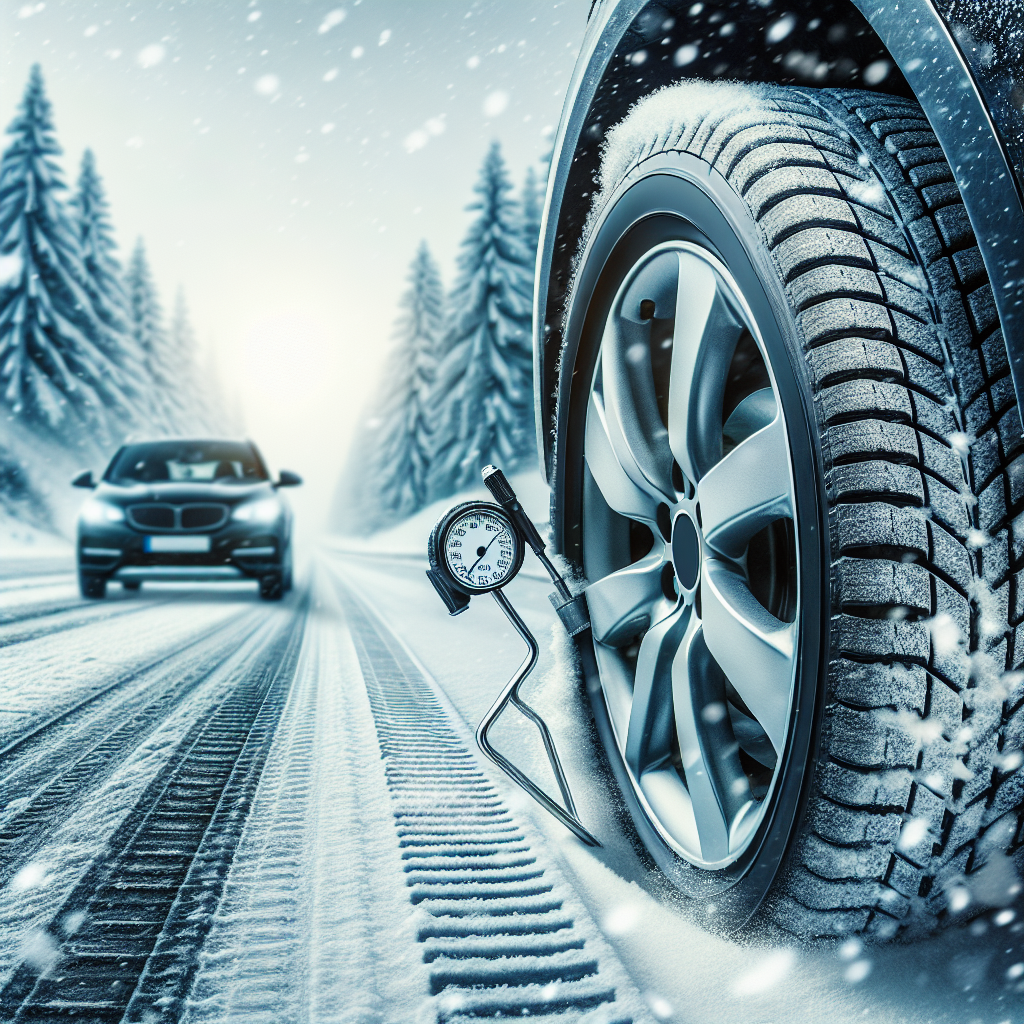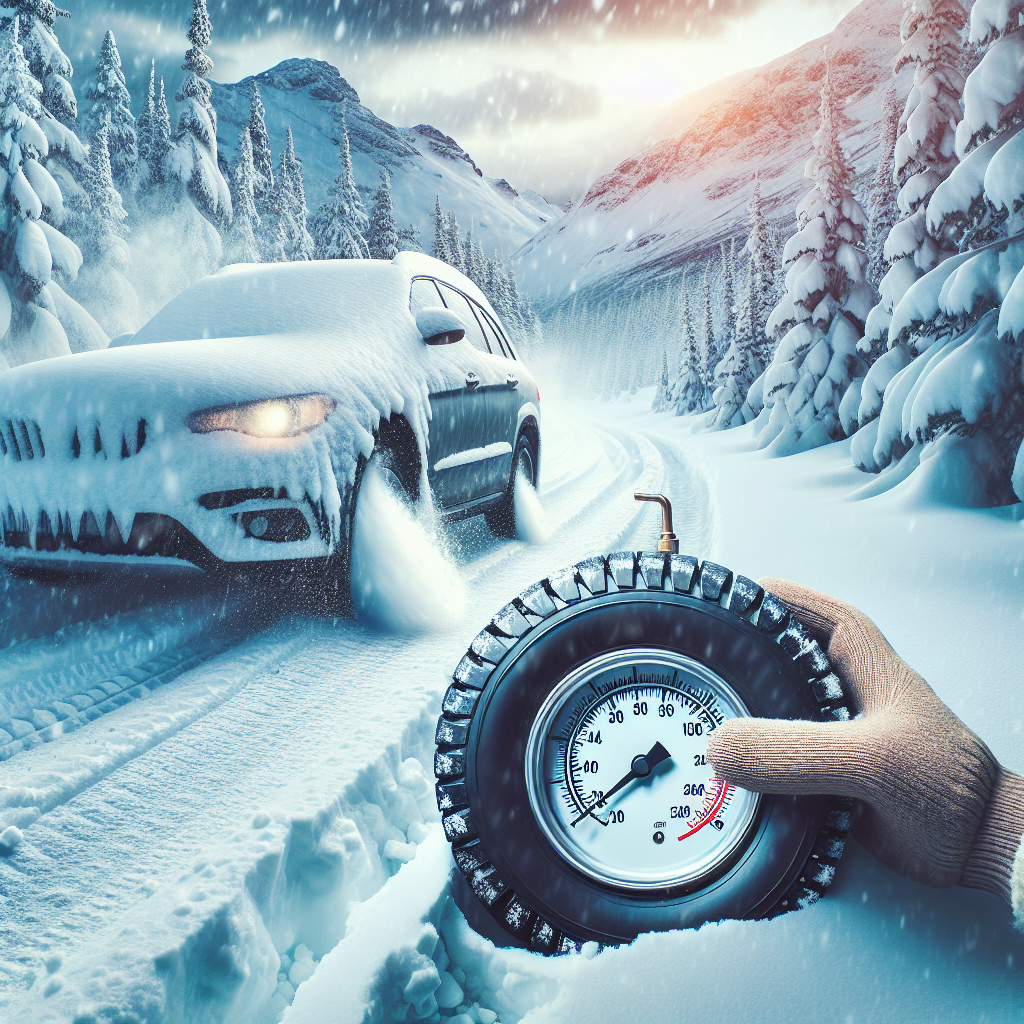When it comes to winter driving, one important factor to consider is tire pressure. But are there any specific recommendations for tire pressure with winter tires? Proper tire pressure is crucial for optimal performance and safety on the road, especially in colder temperatures and slippery conditions. In this article, we will explore the importance of maintaining the right tire pressure with winter tires and why it matters for your overall driving experience. So, let’s dive in and find out the ideal tire pressure for your winter adventures!

Importance of Proper Tire Pressure
Proper tire pressure is crucial for ensuring optimal performance of your vehicle. By maintaining the right tire pressure, you can improve traction and control while driving, ultimately enhancing your overall driving experience. Additionally, maintaining the correct tire pressure can also help increase fuel efficiency, saving you money and reducing your carbon footprint.
Factors Affecting Tire Pressure
Several factors can affect tire pressure, and it’s important to be aware of them to ensure your tires are properly inflated. Temperature fluctuations can cause tire pressure to change, especially in winter when temperatures can drop significantly. Load carrying capacity is another factor to consider, as the weight being carried by your vehicle can impact the tire pressure. Additionally, the size and type of tires you have can also influence the recommended tire pressure.
Recommended Tire Pressure for Winter Tires
When it comes to winter tires, it’s essential to follow the recommended tire pressure for optimal performance. Consulting your vehicle manual is a great starting point to understand the tire pressure requirements specific to your vehicle. Additionally, checking the tire manufacturer’s recommendations is crucial, as they have the expertise to guide you in maintaining the correct tire pressure. It’s also important to consider factors such as the load you’ll be carrying and the driving conditions you’ll encounter during winter.
Tire Pressure Tips for Winter Driving
Winter driving conditions can be challenging, so it’s important to be diligent in checking and adjusting your tire pressure. Frequent checks are recommended to ensure your tires are properly inflated. Adjusting the pressure based on temperature changes is also crucial, as cold weather can cause tire pressure to decrease. It’s advisable to follow the guidelines provided by tire experts, who can offer specific advice based on your vehicle and the conditions you’ll be driving in.

Potential Issues with Incorrect Tire Pressure
Incorrect tire pressure can have several negative consequences that can compromise your safety and the performance of your vehicle. Reduced traction and handling are common issues that arise from running on improperly inflated tires. This can increase the risk of accidents, especially in slippery winter road conditions. Uneven tire wear is another problem that can arise, leading to decreased tire lifespan and the need for more frequent replacements. Additionally, incorrect tire pressure can result in decreased fuel efficiency, ultimately costing you more at the pump.
Effects of Overinflated Winter Tires
Maintaining tire pressure that is too high, or overinflation, can have detrimental effects on your winter driving experience. One of the significant effects is a decreased contact patch between the tire and the road surface. This reduced contact patch results in less grip and traction, making it more challenging to control your vehicle. Additionally, overinflated winter tires can lead to a stiff ride, making the driving experience less comfortable. There is also a potential risk of damage to the tires, as overinflation puts excessive stress on the tire structure, increasing the likelihood of a blowout or other tire-related issues.

Effects of Underinflated Winter Tires
On the other hand, underinflated winter tires can also pose a range of issues that can negatively impact your driving experience. Increased rolling resistance is one of the effects of underinflation, which can make it more difficult for your vehicle to move and require more engine power. Poor handling and stability are also commonly experienced with underinflated tires, making your vehicle less responsive and potentially compromising your safety. Furthermore, the risk of tire damage or failure is higher with underinflated winter tires, as the tires are more susceptible to punctures and blowouts.
Special Considerations for Studless Winter Tires
If you are using studless winter tires, there are a few special considerations to keep in mind regarding tire pressure. Lower tire pressure may be recommended for studless winter tires to maximize their performance. It’s essential to follow the manufacturer’s instructions to ensure the tires function optimally. Additionally, adjusting the tire pressure based on the load you are carrying and the road conditions you will encounter can further enhance the effectiveness of your studless winter tires.

Special Considerations for Studded Winter Tires
Studded winter tires also require special considerations when it comes to tire pressure. In this case, higher tire pressure may be recommended to achieve the best performance. It’s important to refer to the tire manufacturer’s guidelines to determine the specific tire pressure requirements for your studded winter tires. Adaptation of the pressure based on the terrain and environment you’ll be driving in can further optimize the performance and grip of your studded winter tires.
Monitoring Tire Pressure
To ensure your tire pressure remains at the recommended levels, it’s crucial to use a reliable tire pressure gauge. Regularly checking the pressure is essential, especially during the winter months when temperature fluctuations can impact tire pressure more significantly. By maintaining the recommended levels, you can ensure safe winter driving and maximize the performance and longevity of your tires.
In conclusion, proper tire pressure is of utmost importance for optimal vehicle performance, especially during the winter months. It is crucial to consider factors such as temperature fluctuations, load carrying capacity, and tire size and type when determining the recommended tire pressure. By following the guidelines provided by your vehicle manual and tire manufacturer, as well as regularly checking and adjusting tire pressure, you can improve traction, control, and fuel efficiency while minimizing the risk of potential issues. Whether you are using studless or studded winter tires, it’s essential to adhere to the manufacturer’s recommendations and adjust the pressure accordingly to ensure safe and enjoyable winter driving. Remember to monitor your tire pressure regularly using a reliable gauge to maintain the recommended levels for a smooth and safe winter driving experience.


